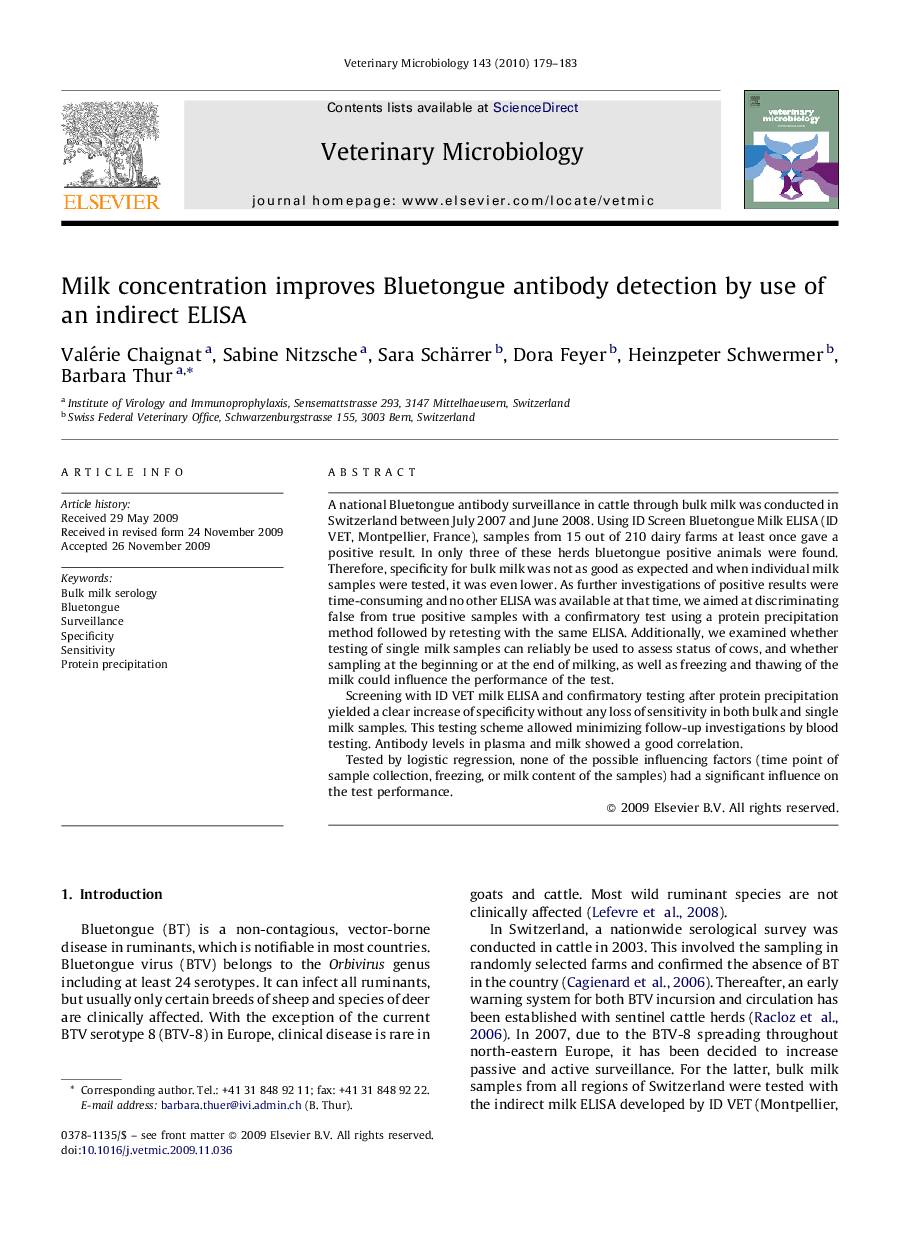| Article ID | Journal | Published Year | Pages | File Type |
|---|---|---|---|---|
| 2468131 | Veterinary Microbiology | 2010 | 5 Pages |
A national Bluetongue antibody surveillance in cattle through bulk milk was conducted in Switzerland between July 2007 and June 2008. Using ID Screen Bluetongue Milk ELISA (ID VET, Montpellier, France), samples from 15 out of 210 dairy farms at least once gave a positive result. In only three of these herds bluetongue positive animals were found. Therefore, specificity for bulk milk was not as good as expected and when individual milk samples were tested, it was even lower. As further investigations of positive results were time-consuming and no other ELISA was available at that time, we aimed at discriminating false from true positive samples with a confirmatory test using a protein precipitation method followed by retesting with the same ELISA. Additionally, we examined whether testing of single milk samples can reliably be used to assess status of cows, and whether sampling at the beginning or at the end of milking, as well as freezing and thawing of the milk could influence the performance of the test.Screening with ID VET milk ELISA and confirmatory testing after protein precipitation yielded a clear increase of specificity without any loss of sensitivity in both bulk and single milk samples. This testing scheme allowed minimizing follow-up investigations by blood testing. Antibody levels in plasma and milk showed a good correlation.Tested by logistic regression, none of the possible influencing factors (time point of sample collection, freezing, or milk content of the samples) had a significant influence on the test performance.
